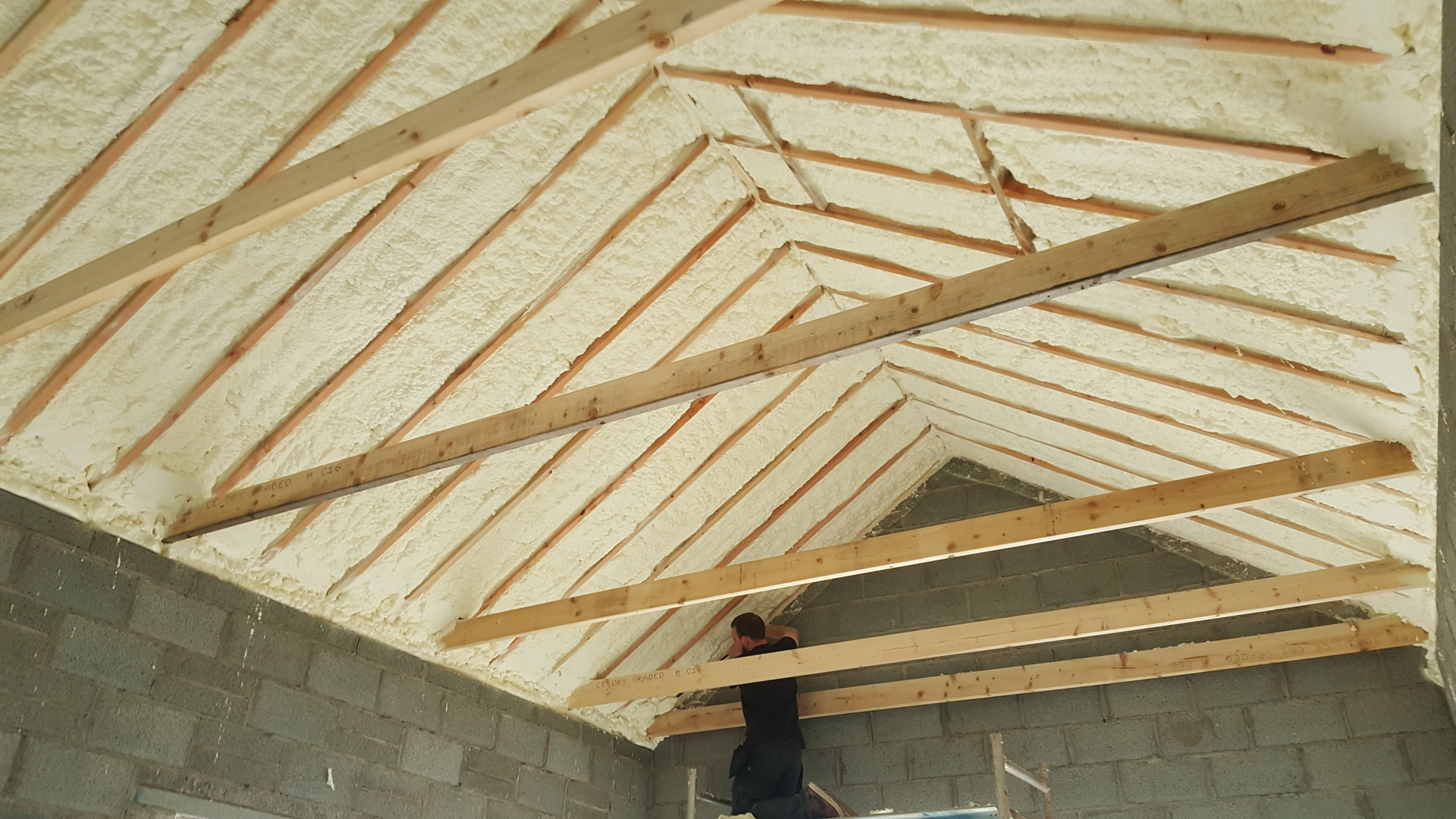

Spray foam insulation, also called spray foam or spray polyurethane foam (SPF), is an alternative to traditional building insulation.
Spray foam insulation is versatile and can be used to insulate your roof, loft, walls and floor, helping to retain warmth and reduce energy costs.
We’d strongly advise getting specialist advice from an expert or two in this area and proceeding with caution.
Spray foam insulation is a liquid foam which is sprayed into position and sets into an insulating layer. It can be used to insulate your roof, loft, walls, floors and more. If spray foam insulation is right for your home and budget, the type you choose will depend on what you want it to do. Keep reading to find out more about the different types.
Both open cell and closed cell spray foam insulation are usually made from polyurethane and filled with bubbles of gas or air, but have different properties when they set. We explain why you might choose one or the other.
However, spray foam insulation doesn’t need to be as thick. 100mm of spray foam insulation is equivalent to around 170mm of mineral wool loft insulation, according to the National Insulation Association. This may allow you insulate your loft and use it for storage, too.
Spray foam is also worth considering if you have hard-to-treat cavity walls or solid walls that aren’t suitable for external insulation due to planning restrictions.
The installation must also conform with the manufacturer requirements, building regulations, and health and safety rules. Your installer should also provide you with the following:
The majority of older properties will not have any felt or membrane underneath the roof tiles. If you have no roof felt in your home, no worries. We will staple in a foam membrane and spray the spray foam insulation directly onto the membrane to prevent and reduce the foam from sticking to the tiles, which is displayed in the pictures below. This is done to prevent you from damaging your home insulation if you want to replace your tiles in the future.
Icynene spray foam insulation will air seal your roof and loft and help prevent heat loss; which will make it cheaper to warm your home up in the extreme winter and keep cool during the summer, therefore helps you save money every year. By providing U-Value insulation as well as good air sealing, it cuts your home’s energy loss.
Icynene spray foam reduces the dangers of respiratory distress as allergies, asthma and certain sensitivities that can be caused by natural airborne irritants. By choosing loft spray foam insulation, your home will be sealed from a wide range of air pollutants, and help prevent the growth of mold.

Insulating a roof is about covering the entire area. Installing a Vent Card or breathable card membrane between the rafters is one way to achieve this.
It is essential that the vent cards are properly fitted. There are a few installers who have used vent cards that were not only able to maintain the 50mm ventilation channel, but also did not allow moisture vapour to pass through them. This will cause moisture buildup, which can lead to wood rot and insect infiltration, as well as encourage mold growth, which will reduce the roof’s lifespan over time.
A breathable vent card can be described as a card that is permeable and strong enough to support insulation. To allow water vapour from leaving your building, a 50mm gap must exist between the membrane and roofing felt.

If you are looking for spray foam insulation for your home or business. We have the best value in the country. Our dedicated team will help you insulated the the whole of your home.
Dublin Southside
Parkhill
Kilnamanagh
Dublin 24
Dublin Northside
Block C
The Crescent Building
Northwood
Santry
Dublin 9
Contents